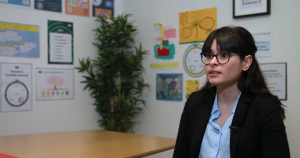
Utilising research around the needs of the teenage brain, the International Middle Years Curriculum (IMYC) connects and improves learning and supports the challenging transition from primary to secondary school.
Through its progressive, culturally responsive pedagogy, it encourages teenagers to be informed, globally competent, and future-ready learners.
Personalised learning
As the final stage of the International Curriculum, the IMYC incorporates the latest educational research and evidence to ensure it remains at the forefront of learning design for international education.
The IMYC enables teachers to personalise the curriculum to adolescents’ needs while developing their Knowledge, Skills and Understanding across multiple subject areas.
This personalisation is delivered through the Subject, Personal and International Learning Goals which are core elements of the IMYC. These goals encourage students to engage meaningfully with their academic disciplines, develop personal growth and cultivate an interest in diverse cultures, places, and issues, helping them become globally competent citizens who positively impact society.

See how the IMYC could benefit your school.
01 Support with implementation
Schools and educators receive a comprehensive set of detailed materials and documentation to support implementation, outlining each stage of planning and delivery. This includes an interactive planning tool with pre-populated routes specifically designed for schools beginning their IMYC journey.
02 Interdisciplinary learning
03 A flexible curriculum
The IMYC can be used alone or in partnership with other curricula. It has been mapped to the English National Curriculum and the American Common Core Standards, demonstrating its flexibility and rigour with international benchmarks in education.
Book a meeting
Testimonials
“
Case Studies
Futuraskolan International School, Sweden

Partnering your school with an ICA guide to help you through the critical first phase of curriculum adoption. We work alongside your team to establish strong foundations, create practical frameworks, and build confidence in your new curriculum journey.
Working with you to:
- champion quality
- improve learning and,
- unlock potential.
